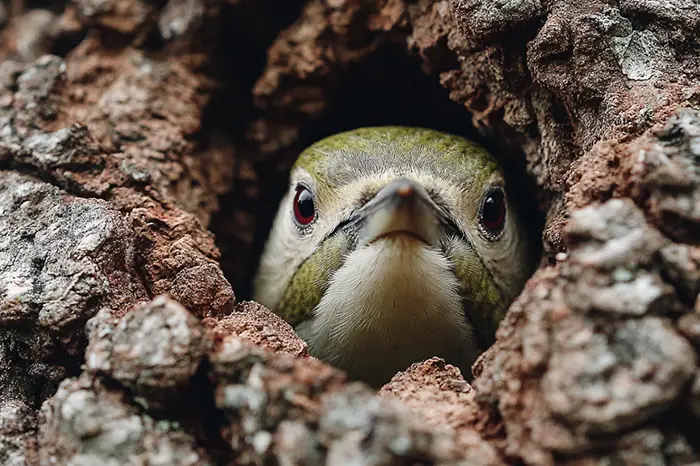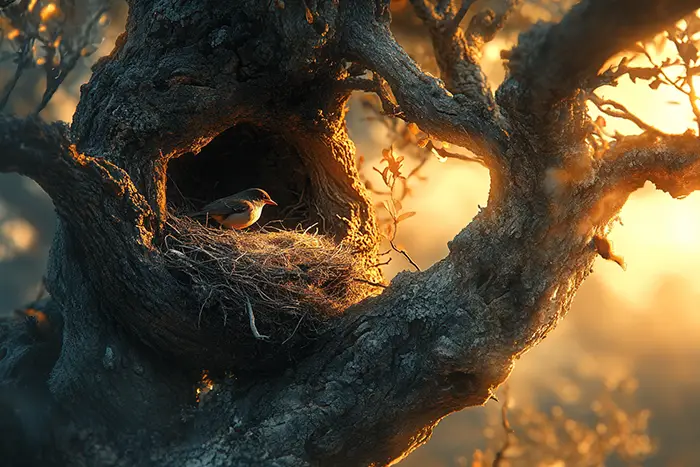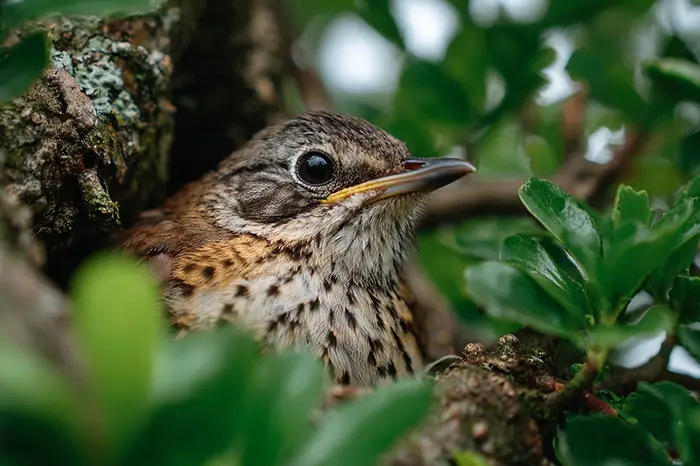At Browns Tree Solutions, we care deeply about the wildlife that calls our trees home. One of the most important things we consider before carrying out any tree work is whether any birds are nesting in or around the tree. Understanding when and where birds tend to nest is crucial for responsible tree care, not just for legal reasons, but to do our bit for nature too.
In this blog, we take a closer look at the types of birds commonly found nesting in the UK, the times of year they tend to nest and fledge (leave the nest), and the kinds of trees they prefer.
When Do Birds Nest in the UK?
The main bird nesting season in the UK runs from March to August, although some birds can begin nesting as early as February. It's against the law to intentionally damage or destroy an active bird nest, so understanding the timeline is vital:
- Early Nesters (Feb-March): Blackbirds, robins, and pigeons.
- Peak Season (April-July): Blue tits, great tits, finches, wrens, woodpeckers, and many more.
- Late Nesters (July-August): Swifts, house martins, and some doves.
Many birds fledge within 2-4 weeks of hatching, but some may remain in the vicinity for longer. Always observe carefully before any pruning or removal.

Birds & Their Favourite Trees
Different bird species prefer different habitats, and tree type plays a big role:
- Oak Trees: Loved by a wide range of species including woodpeckers, jays, and nuthatches due to the abundance of insects and acorns.
- Conifers (like Scots Pine): Favoured by goldcrests and coal tits, which appreciate the dense cover.
- Hawthorn & Blackthorn: Popular with robins and blackbirds for their thick branches and berries.
- Silver Birch: Attracts siskins and redpolls.
- Willows: Great for warblers and some water-loving birds near rivers and wetlands.
- Holly & Ivy-covered trees: Provide shelter in winter and dense nesting sites in spring.
Urban areas see birds nesting in ornamental trees like cherry, maple, and even leylandii hedges, so don’t rule out smaller garden species.

Tree Work and Nesting Birds: Our Approach
Before we begin any pruning, reductions or removals, we always conduct a thorough visual inspection for signs of bird activity. If there's a chance that nesting is taking place, we postpone work until it's safe and legal to proceed.
We also advise our customers to book tree work outside the nesting season where possible, typically from September to February.

Need Tree Work Done Responsibly?
If you're planning any tree work and want to make sure it's done with care for nature and full compliance with wildlife law, get in touch with Browns Tree Solutions today. Our experienced team knows what to look for and how to carry out safe, ethical tree care.
Whether you're a homeowner, business, or local authority, we're here to help - with a keen eye for detail and a heart for conservation.
Birds play a vital role in our ecosystem, and trees are their homes. By understanding their habits and respecting their space, we can all contribute to a healthier natural environment.
And remember, when in doubt, always consult a professional arborist. At Browns Tree Solutions, we've got your back - and the birds' too.







